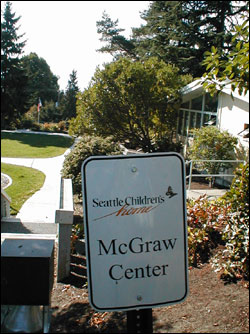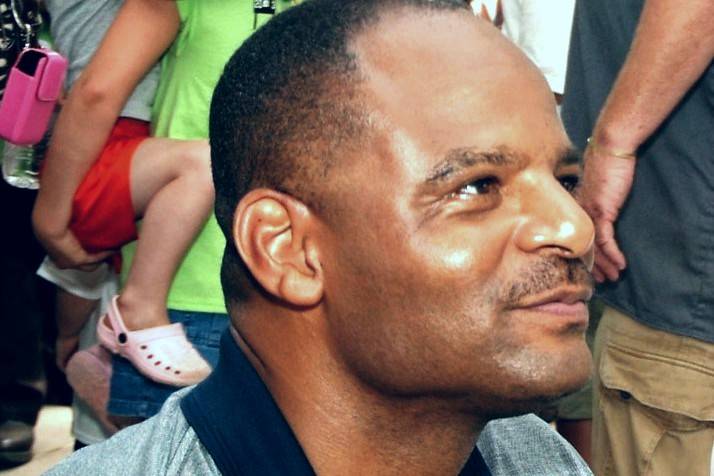Where did the $2.3 million go and what did donors get for their money? Those are among the questions lingering over the woodsy, half-block campus of Seattle Children’s Home on Queen Anne Hill. As one of the city’s oldest and most respected institutions (not to be confused with the Children’s Home Society of Washington), the nonprofit home attracts the deep-pocket support of the city’s rich and famous. Its $8 million annual budget, $5.5 million of it provided by public agencies, is buttressed with hefty private donations from Bill Gates, Paul Allen, the McCaw family, the Nordstroms, Boeing, and the MacArthur Foundation. The home’s board members include University of Washington fetal-alcohol-syndrome expert Dr. Sterling Clarren and state Supreme Court Justice Bobbe Bridge. Founded in 1884 as an orphanage run by the Ladies Relief Society, Seattle Children’s Home has evolved from the state’s first children’s charity into a modern provider of mental-health services for at-risk children and young adults. They are referred through courts or state and local agencies, and some are held in a locked ward for treatment.
In the past few years, several million dollars of the home’s revenue has been allocated for a new treatment program, funded by the donors’ big money, that was created to help hundreds of kids but has little to show in the way of demonstrable results. At this point, it might exist only on paper. “I was beginning to wonder about that myself,” says John Corbally of the Chicago-based John D. and Catherine T. MacArthur Foundation, which gave the SCH program a $1 million endowment. At one point, he was so upset at the lack of information about how the foundation’s money was being used that he told SCH officials he wished he’d directed the money to another organization.
Called Continuum of Care, the program was conceived in the 1990s by then-SCH President David Cousineau to generate $35 million in grants and donations for the home. SCH raised $3.8 million from 75 donors in the past four years. Today the fund consists of the $1 million endowment, which can’t be spent, and possibly $500,000 in cash. An internal document calls the Continuum campaign “stagnant for quite some time.” The $2.3 million that has been spent served few, if any, children through the program, according to current and former employees and the home’s financial and internal documentssomething SCH has not told donors or the public.
Home officials last week would not reveal how the money was spent, nor would they produce reports documenting program results. Documents obtained from other sources, however, show that most of the $2.3 million was spent on SCH staff salaries, consulting, furniture, fund- raising, and other overhead.
THE GATES AND Allen foundations did not respond to questions asking if they were aware of the program’s apparent inactivity. Another local foundation official said she was curious about how the money was being used and would ask the home for more information.
Instrumental in the program’s lack of performance was a proposal by the home to independently decide when to lock up some children. That notion caused the state Department of Social and Health Services (DSHS) to balk at sharing clients and funding under the plan. “Mr. Cousineau insisted on having sole authority to lock up children if he thought that was necessary to control behavioral issues,” DSHS spokesperson Kathy Spears said last week. “That violates federal law, which could lose the state millions of dollars in federal funds or result in lawsuits by legal advocates on behalf of children placed in secure facilities without due process.”
Headquartered on 10th Avenue West, SCH has quietly shut down or transferred to other agencies six other programs and satellite operations in the past two years and has laid off staff. Like other nonprofits, SCH’s government subsidies and fund-raising have flagged in the slumping economy. The future of the 119-year-old charity itself might be in question. In 2001-’02, the latest fiscal year for which reports are available, the home had a deficit of more than $1.1 million. Despite cost cutting, the facility expected to run a deficit of at least $600,000 into 2004, according to financial projections.
Headed now by Executive Director Bonnie Sandahl, Seattle Children’s Home initially declined to answer questions from Seattle Weekly about the facility’s financial condition, responding instead with an e-mailed copy of the program concept. “That’s our statement,” public relations director Linnea Peover said in a phone call. The home later agreed to answer a list of written questions. But it would not provide detailed information, saying the data are available through the home’s annual nonprofit report to the Internal Revenue Service and in other public records. Seattle Weekly has obtained those records and other documents, but evidence of specific program spending and success has proved elusive. In its written response, SCH said of its overall financial condition that officials are “constantly working to reduce expenses and focus our energy on providing direct service with the funds available. Our goal, as with any nonprofit, is to balance the budget, and we are working toward that goal.”
Said ex-leader Cousineau, in an e-mail response last week: “All the kids of the home are served through the donations to the Continuum.”
THAT WAS NOT, however, the promise of the program when donors began sending in checks. Continuum of Care was launched in 2000 (a year after fund-raising began) as a “five-year study of children who experienced multiple placements [in group or foster homes] with limited success.”
In the words of Cousineau at the time, the plan would offer long-term help and follow-up “instead of the stop-start-stop experience of most programs.” Cousineau, whose salary was $154,000, left SCH this year to become CEO of Holt International, the global adoption agency based in Oregon. “The Continuum of Care was, and I hope still is, about a system change for the way the sickest children in our state are cared for,” Cousineau said last week. “Eight years of my life and passion have gone into this effort. I deeply believe that a new mode is desperately needed so these very sick kids can get well, stay well, and enter adulthood successfully.”
To Cousineau and the home, the program was an innovative and comprehensive new treatment plan. To others, including critics within SCH, it was simply an extension of current operations wrapped in a new fund-raising concept. The home’s financially struggling empire would expand considerably if DSHS agreed to relinquish clients and funding to the home. The state says it generally supported the concept, but in the course of discussions concluded that the majority of children likely to be served by the program were already involved in the department’s mental-health system. And by law, says DSHS spokesperson Spears, money for community-based mental-health services is dedicated to a regional support network of services and can’t be diverted. Failure to establish that key partnership and an unsuccessful attempt by the home to lobby the Legislature to change the law could have stopped the Continuum of Care in its tracks. But fund-raising for the program has continued through this year, according to internal documents. The home would not answer questions about its 2002-’03 fiscal year, saying its financial figures are still being audited.
According to SCH’s own contribution list, the Bill and Melinda Gates Foundation has given $350,000 to the Continuum of Care cause since 1999. The McCaw family gave at least $258,000. The Paul G. Allen Charitable Foundation gave $50,000. The $1 million MacArthur endowment, distributed in quarterly installments, has been used to attract other donations and to generate interest income. It also is used as security for a $590,000 line of credit. But a 2001 outside audit warned that using the endowment to secure the unrelated loan “places [Continuum] donor contributions at risk and may lead to the appearance that funds are not being used as intended.”
THE HOME’S PLANNING documents projected that 667 youths would be enrolled in the program initially17 with severe emotional problems and 650 “at-risk” youths. By 2005, those numbers were to increase to 52 and 900, respectively. The initial fund-raising goal was $7.2 million, growing to $35 million in donations by 2005.
Progress reports sent to donors claimed that the program had helped hundreds of kids. A July 2001 progress report said 218 were given “assessments” and 172 clients were given “transitional assistance.”
But an SCH document written in fall 2002 reveals that the initial plan of enrolling 17 seriously emotionally disturbed children fell short. “We were not able to recruit enough children for the control group,” the unsigned program review states, “so the rigorously evaluated demonstration project planned was not completed.”
THE HOME TODAY says the program has helped 80 children since early 2002, but it would not provide documentation. A progress report in 2002 said Continuum raised more than $3.3 million, which included the $1 million endowment, with more than $1.7 million spent on Continuum children. That money, the report said, went for salaries for the assessment and treatment of children, family advocacy, research, and administration. The most current available donation tally, dated last March, pegs total fund-raising at $3.8 million.
The 2002 update also seemed to signal that the Continuum program had morphed into something else that was not in the original plan. Though the Gates Foundation had given $200,000 in 2001 specifically to the Continuum of Care program, as stated in a press release at the time, the update a year ago referred to that donation as given “to create the Pediatric Assessment Center (PAC), which has become the centerpiece of the Continuum of Care.”
The Pediatric Assessment Center opened in spring 2002 and “is already having significant impacts,” said the update. A separate SCH document describes the pediatric center as having served 80 childrenthe same number supposedly helped by the Continuum program. The assessment center appears to offer similar services, as well, such as assessment, testing, and “a complete evaluation by an interdisciplinary team of professionals.”
Home officials say the center is part of the Continuum of Care. Cousineau says he’s “confident that the present leadership of the home will carry this vision forward through its pediatric assessment capacity.” Current and former employees think the assessment center was created to show that donations were spent on something tangible. The home would not say if the new center is succeeding but said, “SCH works closely with our donors to make sure that money is distributed per the donor’s desire.”
Claiming the assessment center as a Continuum program is at least a good financial strategy. It’s likely that the $1 million endowment, for example, can be used to anchor another program, says MacArthur official Corbally, “unless it’s a radical change” from the original plan. Corbally, MacArthur’s first president in 1979 and then chairman of the board until last year, now lives in Mill Creek. The respected private foundation provides grants to, in its words, help “foster lasting improvement in the human condition.”
Corbally said he suggested the Continuum of Care endowment in 2000 as one of his final acts as a MacArthur board member. He was not happy when, in 2002, he wrote Cousineau about the lack of information on how the money was being used and said that if he had his donation to do over, “the YWCA would be the recipient.”
COUSINEAU WROTE a letter of apology and promised to keep Corbally informed, which the home did with a newsletter. (Says an internal SCH e-mail, dated last April 15: “Since the campaign has been stagnant for quite some time, and since we no longer have a Campaign Manager, I guess it’s up to you and Doris as to what you’d like to report to Jack. . . . In the past, he has become a bit feisty when he hasn’t received regular, quarterly reports. . . .”)
“Maybe a month ago,” Corbally said last week, “we got a copy of the newsletter, and my wife and I noticed that the word `Continuum’ didn’t appear anywhere in it. We wrote to them and wanted to know if maybe it was just a semantics problem.” They haven’t heard back.
Despite his concerns, “The concept of the program and the home itself is really great,” Corbally says. “Too bad it has kind of run afoul of this bureaucratic thing.”








